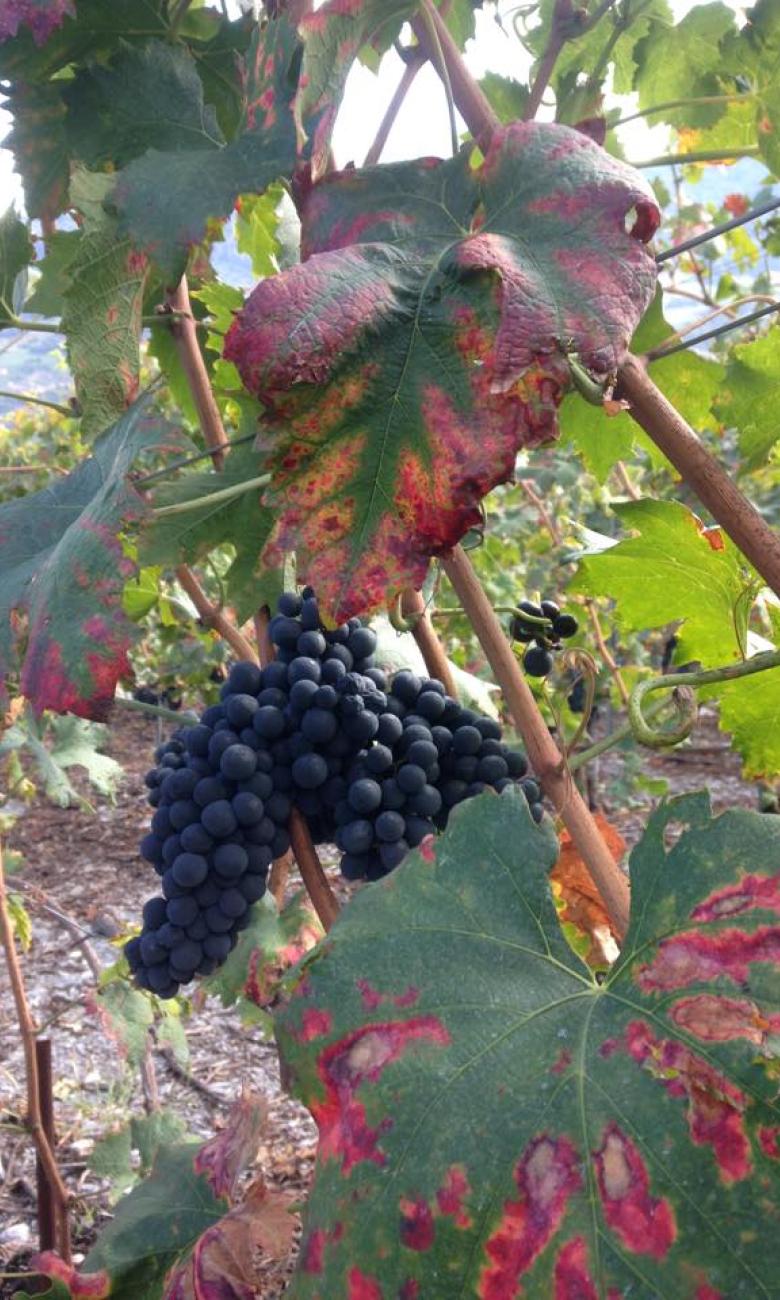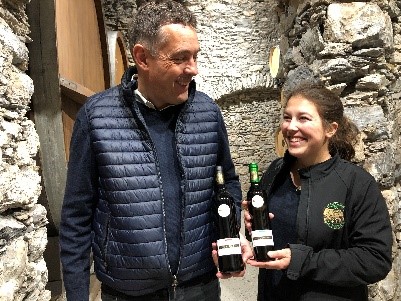Grape varieties – Swiss made
You may be surprised to hear that Switzerland has more than 200 indigenous grape varieties. For hundreds of years now, many of these have been imported and bred by winegrowers all over the world. Among the most widespread varieties worldwide are Merlot for red wine and Chardonnay for white.
"In viticulture, a grape variety is said to be indigenous when it is known with reasonable certainty to come from the region – and there are records and references to testify to the origin – or when a link has been established with another grape variety from the same location," explains Markus Rienth, a lecturer at Changins School of Viticulture and Oenology. In Switzerland, the four most cultivated indigenous grapes are Chasselas, Petite Arvine, Humagne Rouge and Cornalin. These varieties of Swiss origin are appreciated by wine connoisseurs worldwide.

Some varieties making a splash
At the 25th Vinalies Internationales wine competition in Paris in March 2019, an estate in the canton of Valais won awards for two of its wines, a Petite Arvine and a Cornalin. With an outstanding score of 99/100 – the highest ever in the history of the competition – their Cornalin received the Vinofed Prize as well as the award for best wine in its category. "It has a fruity taste, a blend of red fruits and cherry stones," says Marc-André Devanthéry, manager of the Mont d'Or estate in Sion. "I was dumbstruck when I saw the judges' marks. The panel was unanimous – it's unbelievable! Our aim is to let the terroir express itself through the wine. These prizes are a fantastic recognition of our work – and even more so since they were awarded in Paris, where our estate won its first ever international prize, at the Universal Exhibition in 1878."

While the red Cornalin has been grown for only the past 30 years at Mont d'Or, Petite Arvine is one of their flagship varieties. "We have been growing this grape since 1920. On the palate, there is a taste of quince and honey with a hint of botrytis, a flavour rich in sugars that finishes with a touch of crispness," says Devanthéry about his Petite Arvine, which also won the prize for best wine in its category in Paris. This dessert wine is made only when the grape quality allows, he says, "in the best years, usually around every second year." By way of recommendation he adds, "I tend to drink a Cornalin with some good-quality red meat or game poultry. For me, Petite Arvine is a perfect wine for contemplation. It is best enjoyed on its own, but it also goes very well with a dessert or a mature hard alpine cheese."
Four main indigenous varieties
Cornalin and Petite Arvine are two of Switzerland's four main indigenous grape varieties. The most common variety for white wine is Chasselas, with Petite Arvine a distant second. For reds, Humagne Rouge and Cornalin are the most common indigenous varieties cultivated in Swiss vineyards. Some indigenous grape varieties occur naturally, while others result from a crossing of two varieties, whether spontaneously or in the lab. "It is estimated that there are between 5,000 and 10,000 different varieties in the world. About 20 of them are cultivated on 80% of the world's vineyards. These include, for example, Cabernet Sauvignon for reds and Sauvignon Blanc," says Markus Rienth. "Each region has certain grape varieties recommended for its particular environment."

Past and present
The Chasselas grape is native to the Lake Geneva region and has been recorded since the 17th century as 'Fendant' – a name still used in Valais, where the variety was introduced in 1848. The oldest variety is Petite Arvine, which was first recorded in 1602 and is now mainly grown in Valais. Among the indigenous red varieties, Humagne Rouge was said to be introduced to Valais in the late 1800s from the neighbouring Aosta Valley. Given the proximity between these two regions, wine experts now consider it an indigenous Swiss grape variety. Cornalin, also originally from Aosta Valley, is now grown exclusively in Valais. Traditionally known as Rouge du Pays, it was renamed Cornalin in 1972. Despite their different histories, these four varieties have one thing in common: their Swiss origin. Which one will be your favourite?

Swiss facts & figures
- 15,000 hectares of vineyards
=
+ 6,000 hectares of white varieties
+ 8,000 hectares of red varieties
- Chasselas (60%) is the most widely grown indigenous white variety in Switzerland. Petite Arvine (3%) is the second most cultivated indigenous grape variety.
- For red wine, Cornalin (2%) and Humagne Rouge (2%) are the two most cultivated indigenous varieties.
- On average, more than 10 litres of pure alcohol are consumed per person each year in Switzerland.





